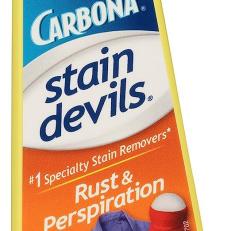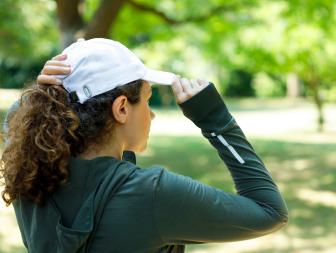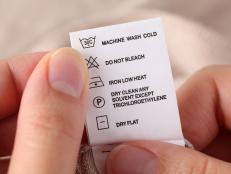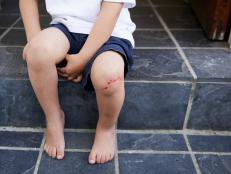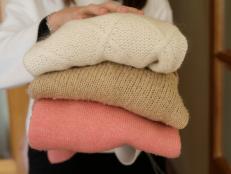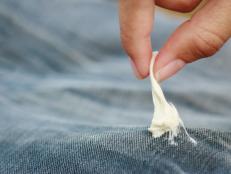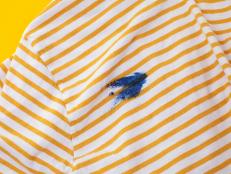How to Remove Sunscreen Stains From Clothes, Upholstery and Car Seats
Oils and minerals in sunscreens can often stain clothing and upholstery. Learn how to remove sunscreen from furniture, clothes and other fabrics before stains set in.

From bathing suits and beach towels to T-shirts and car upholstery, the oils and ingredients in sunblock can degrade and damage fabrics over time. Avoid irreversible staining by learning how to remove sunscreen stains from any material.

Shutterstock/Elizaveta Galitckaia
What Causes Sunscreen Stains?
Oxybenzone and avobenzone are sunscreen ingredients that produce yellowish or rust-colored stains on clothing after interacting with minerals in hard water. Whether or not your home has hard water, pay close attention to your garments before you do your next load of laundry. Once the chemical reactions have taken place, it can be very difficult (if not impossible) to remove sunscreen stains.
Furthermore, the chemical makeup of your sweat can also worsen stains, shares Dr. Deanne Mraz Robinson, president and co-founder of Modern Dermatology and assistant clinical professor of dermatology at Yale New Haven Hospital. “Since avobenzone is a chemical absorber (it works in SPF by absorbing UV light), it will soak up chemicals and minerals activating the orange, rust-colored stain reaction.”
If you struggle with white smears and stains on your dark fabrics, blame titanium dioxide and zinc oxide. These two ingredients won’t discolor the fabric in a rusty way, but they are physical particles that cling to the fibers — even after washing. Mineral sunscreens that include zinc are notoriously harder to remove. If you’ve ever used diaper cream on an infant, you’ll recognize how its properties tend to cling and mask the fabric. You can remove zinc sunscreen particles from fabric similarly to how you would remove diaper cream stains.
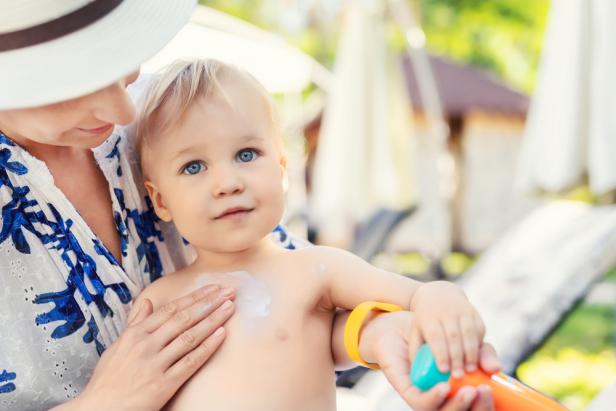
Shutterstock/Gorloff-KV
Applying sunscreen to a toddler.
What Not to Do When Treating Sunscreen Stains
When you’re treating sunscreen stains, most of your go-to stain-removal techniques fly out the window. Since oxybenzone and avobenzone can oxidize or appear to rust in the presence of hard water minerals, there are a few things you should avoid:
- Don’t soak sunscreen stains in water. More moisture can actually deepen the color of the stain and cause it to set in.
- Don’t use bleach or oxy alternatives. These products won’t lift rust stains and can cause them to worsen.
Instead of using your common stain remover, use laundry products and techniques that target rust. Mixtures of lemon juice and table salt create a powerful treatment, while store-bought options like Carbona Stain Devils (#9) and Iron OUT are specifically formulated for cleaning rust and perspiration from fabrics (so yes — tackle those pit stains while you’re at it).
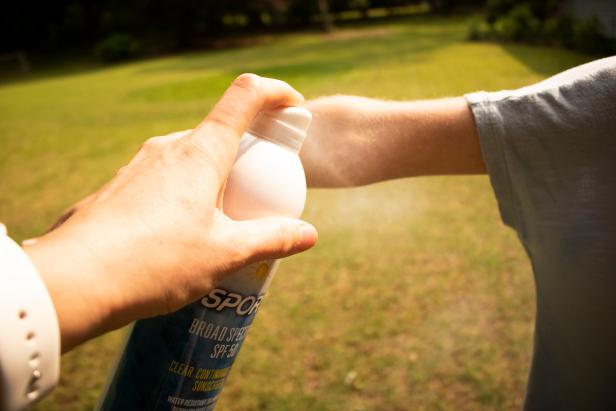
Sunscreen spray affects children's clothing all summer long.
Some Items to Try:
- Carbona Stain Devils #9
- Iron OUT rust stain remover
- gentle sponge
- liquid dish soap
- white vinegar
- lemon juice
- table salt
- rubbing alcohol
- spray bottle
- cotton and microfiber cloths
- moisture guard fabric spray
- leather cleaner
Shop Stain Removers
3 Ways to Remove Sunscreen From Clothes and Towels
Use these tried-and-true pretreating interventions to mitigate deep-set stains and discolorations from oxybenzone and avobenzone.
Lemon Juice and Salt:
- Lay the stained garment on a flat surface. Choose a place where it can rest overnight.
- Apply the juice of a lemon directly to the stain. Use an old toothbrush to massage it in.
- Pour table salt on top of the stain. Depending on the area you’re treating, you may need as little as a teaspoon or as much as a 1/8 cup.
- Leave the area untouched and allow the interaction between the salt and lemon to take place.
- Lift the garment in the morning. Brush the freestanding salt into the sink.
- Launder the garment as usual.
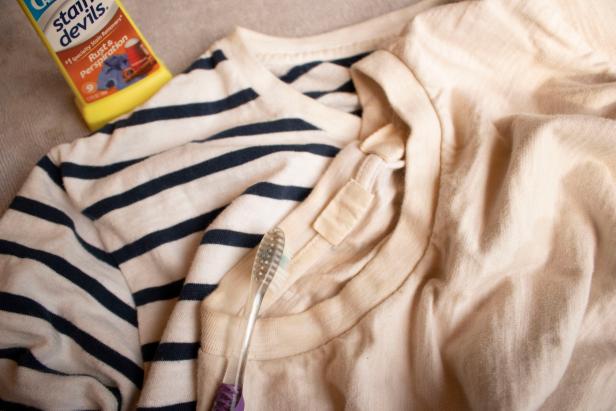
Rust-removing laundry solution takes sunscreen stains out of clothing.
Rust-Removing Laundry Cleaner:
- Follow the manufacturer's instructions. Many rust-removing products require you to soak the stain and allow it to sit for up to one hour or longer before washing.
- After the stain remover has set for the directed amount of time, rub the stain remover in. You may use an old toothbrush to agitate the stain and help lift it from the fabric.
- Rinse the garment with warm water.
Learning how to get zinc sunscreen stains out of clothes is a little different.
- Apply liquid laundry detergent directly to the stain on the garment. Leave it to soak for 10 minutes.
- Rinse the pretreated garment under cold water in the sink. Massage at the stain to lift and loosen the minerals until the white zinc is visibly gone or significantly reduced.
- Launder the item as usual in the washing machine. Before putting it into the dryer, check to see if the stain is completely gone. If not, pretreat the stain again and repeat the cycle.
If your home has hard water, you may want to consider treating all of your clothing when you wear sunscreen to prevent premature staining, especially around the collar of your shirts or inside the edges of your sleeves.
How to Wash a Baseball Cap
Sweat and sunscreen stains commonly discolor hats, find easy ways to keep them looking clean and new.
How to Remove Sunscreen From Outdoor Furniture
Sunscreen transfers from your skin to the cushions on outdoor seating hastening the discoloration of the material. "When it comes to removing sunscreen from outdoor fabrics, a sponge dipped in dish soap and vinegar would be highly effective” shares Robert Polik, Sr. Application Engineer at Scotch-Brite.
- Dilute a teaspoon of dish soap and vinegar into a cup of water. Stir to combine.
- Soak the sponge in the cleaning solution, and rub the stained area to lift out the stain. Repeat until the stain is entirely removed. Be sure to use the cellulose spongy side as the scrubbing fibers could pull at fabrics.
- Rinse the sponge clean and use plain water to lift any residual soap from the fibers.
- Use a dry microfiber cloth to absorb excess water from the cushion.
- Mitigate future stains by treating the fabric with a protectant. Outdoor fabric spray repels moisture from the upholstery fibers and makes it easy to wipe down your cushions after use.

m-gucci/iStock
Sunscreen transfers to outdoor fabric and furnishings.
How to Remove Sunscreen From Car Upholstery
Sometimes it isn’t so much the sunscreen stains you see on your car upholstery, but the oils that transfer onto the fabric and other interior surfaces. The interior of the car has less interaction with water to enhance rustiness on the fabric, but cleaning the fabric is important nonetheless.
- In a spray bottle, combine 1 cup of white vinegar with a 1/2 teaspoon of liquid dish soap. Close the bottle and shake to mix.
- Spray the mixture onto the fabric seats in your car. Use a microfiber cloth to immediately wipe down the fabric, working at areas affected by sunscreen.
- Treat other areas. If areas such as the armrests, door interiors and seat belts are also affected by sunscreen stains, this solution is safe enough for all applications.
- Repeat as necessary. Keep in mind that undiluted white vinegar is potent. Your upholstery will be clean, but it may retain an odor.
- Wipe a sponge dampened with plain water over cleaned surfaces to remove any signs of soap. Soap may be more prevalent on hard surfaces, such as armrests or the plastic interior of your vehicle’s door. Plain water will also help remove the vinegar smell from your car.
- Allow your vehicle’s upholstery to dry with the windows open.
If you notice shiny spots from sunscreen oils on leather upholstery, try this:
- Fill a spray bottle with rubbing alcohol.
- Mist a small amount of alcohol onto the sunscreen stains.
- Use a sponge or cotton cloth to gently wipe the surface of the leather. Wiping continuously will help remove the sunscreen from the pores.
- Apply a leather cleaner. Massage the cleaner into the leather using a microfiber cloth to prevent the alcohol from drying out the leather.
Are There Sunscreens That Won’t Stain Clothes?
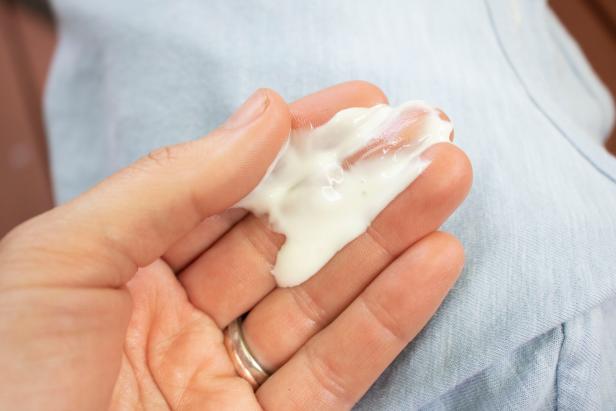
“Overall, I prefer and most often recommend oil-free, mineral-based SPFs,” shared Dr. Robinson. “These formations take some of the leading risk factors for SPF staining out of the equation: oil and avobenzone. Mineral SPFs contain the active ingredients zinc and/or titanium dioxide — these work by sitting on the skin’s surface where they physically shield the skin and repel UV rays. Since mineral SPFs aren’t absorbed into the skin they won’t interact with sweat the same way that chemical SPFs might.”
Some of her favorite oil-free, mineral SPFs are:

.-Battle-on-the-Beach-courtesy-of-HGTV.-.jpg.rend.hgtvcom.196.196.suffix/1714761529029.jpeg)




